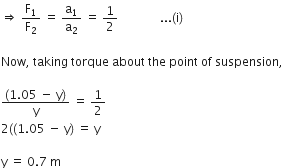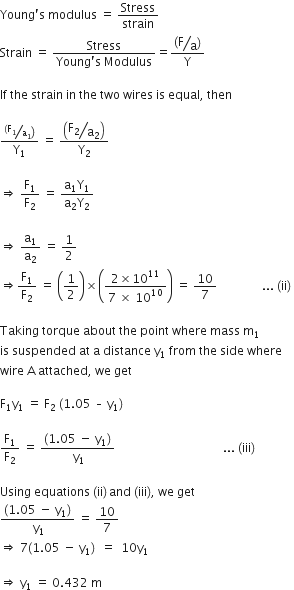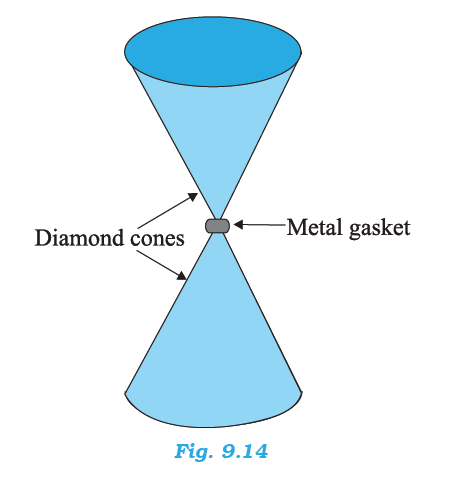The Marina trench is located in the Pacific Ocean, and at one place it is nearly eleven km beneath the surface of water. The water pressure at the bottom of the trench is about 1.1 × 108 Pa. A steel ball of initial volume 0.32 m3 is dropped into the ocean and falls to the bottom of the trench. What is the change in the volume of the ball when it reaches to the bottom?
Water pressure at the bottom, p = 1.1 × 108 Pa
Initial volume of the steel ball, V = 0.32 m3
Bulk modulus of steel, B = 1.6 × 1011 Nm–2
The ball falls at the bottom of the Pacific Ocean, which is 11 km beneath the surface.
Let the change in the volume of the ball on reaching the bottom of the trench be ΔV.
Bulk modulus, B = p / (∆V/V)
∆V = B / pV
= 1.1 × 108 × 0.32 / (1.6 × 1011 )
= 2.2 × 10-4 m3
Therefore, the change in volume of the ball on reaching the bottom of the trench is 2.2 × 10–4 m3.
115 Views



 266 Views
266 Views 




